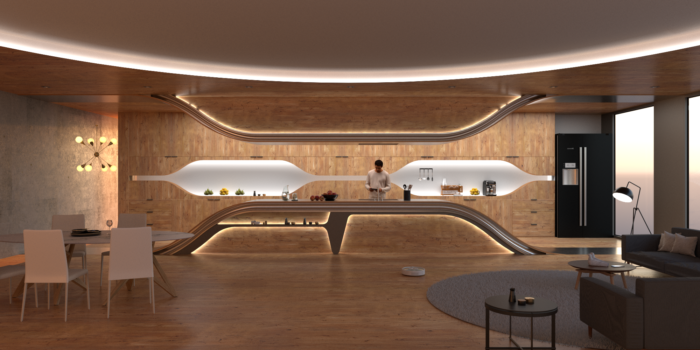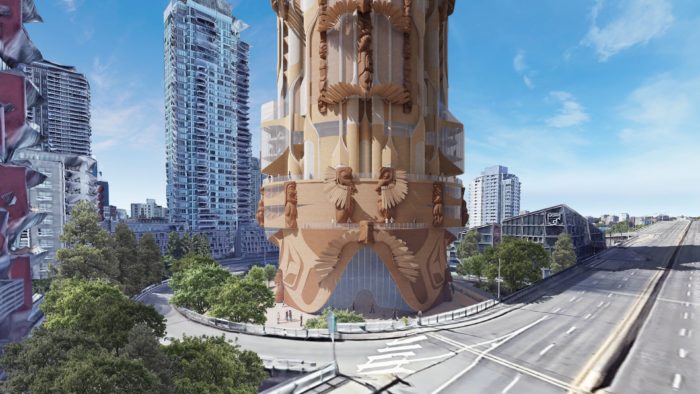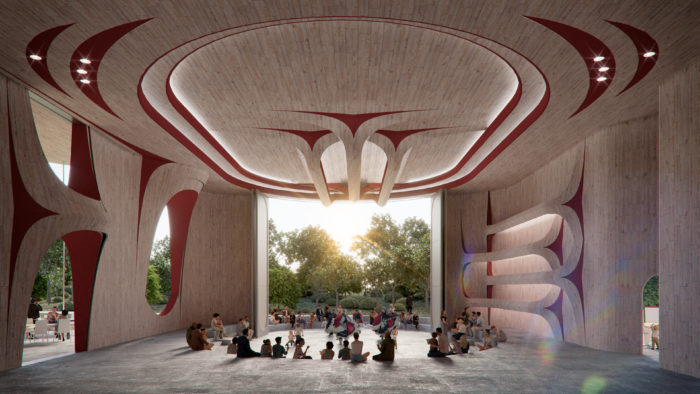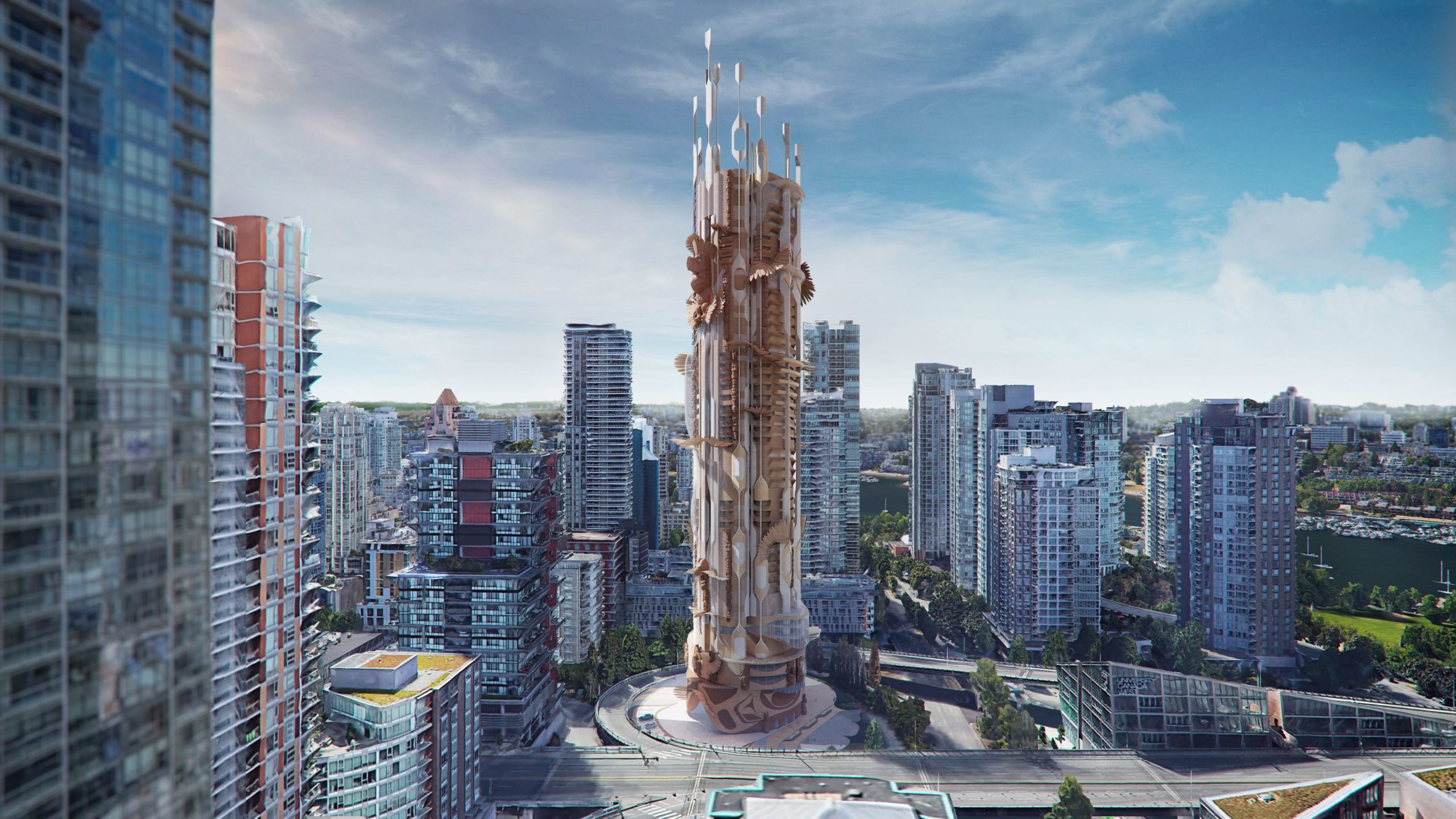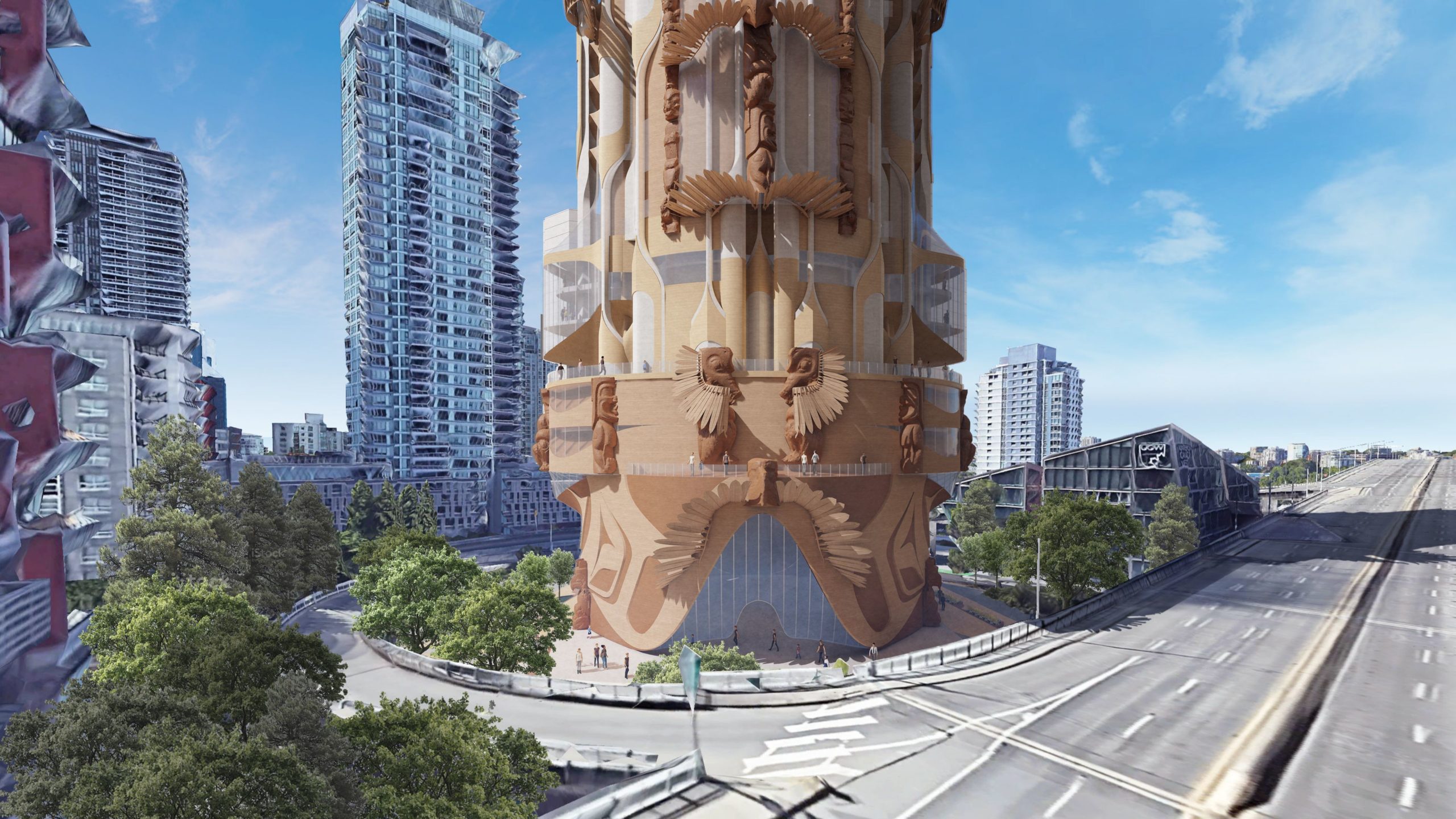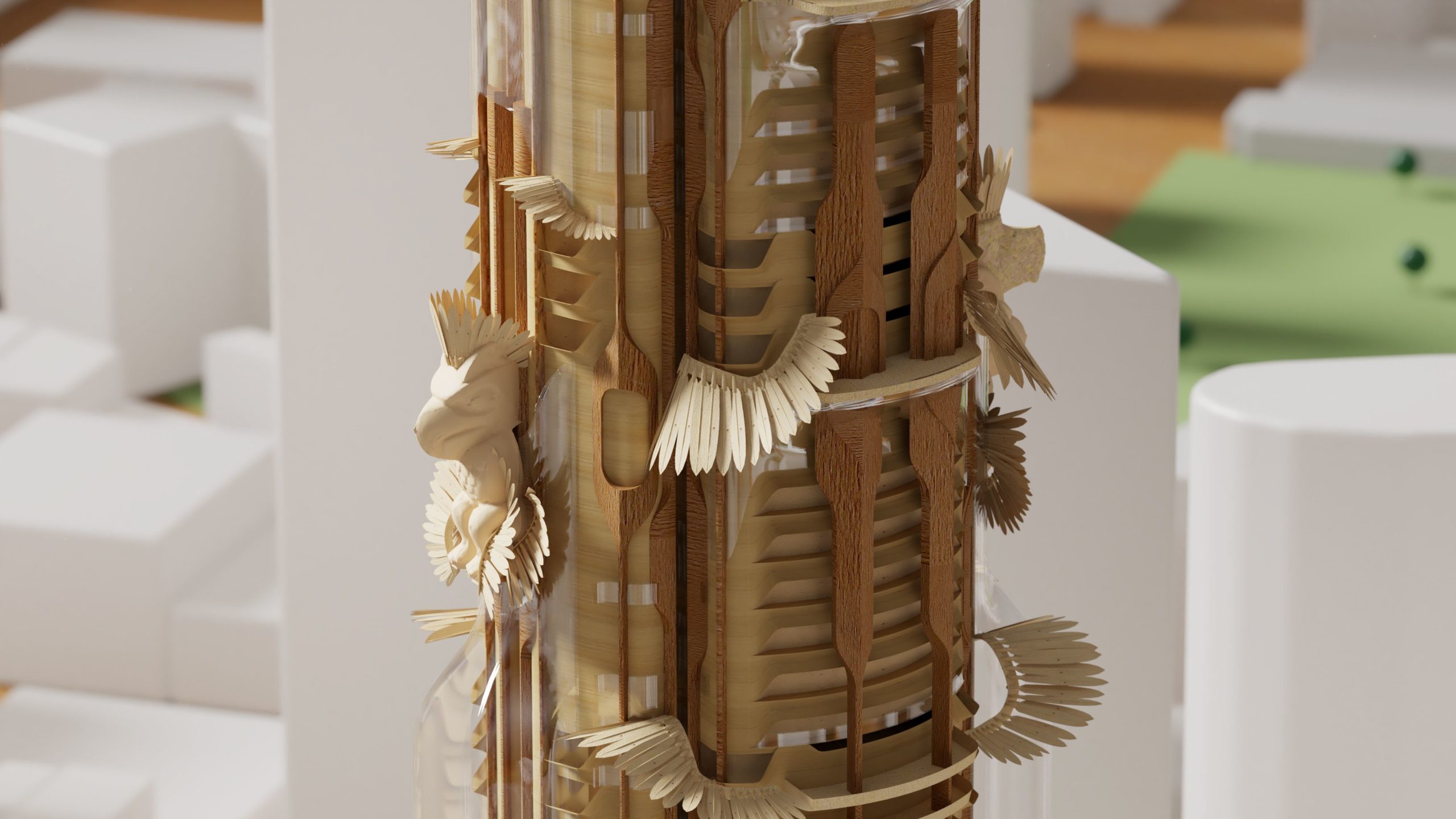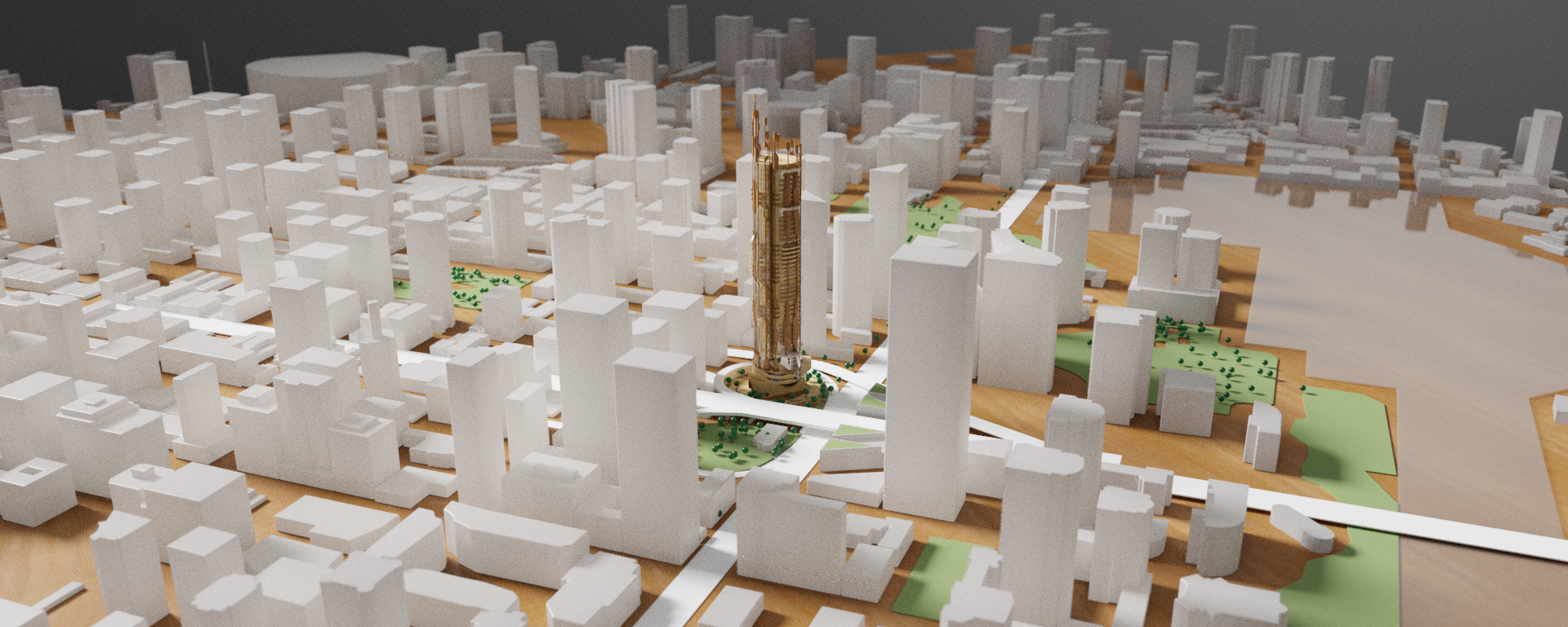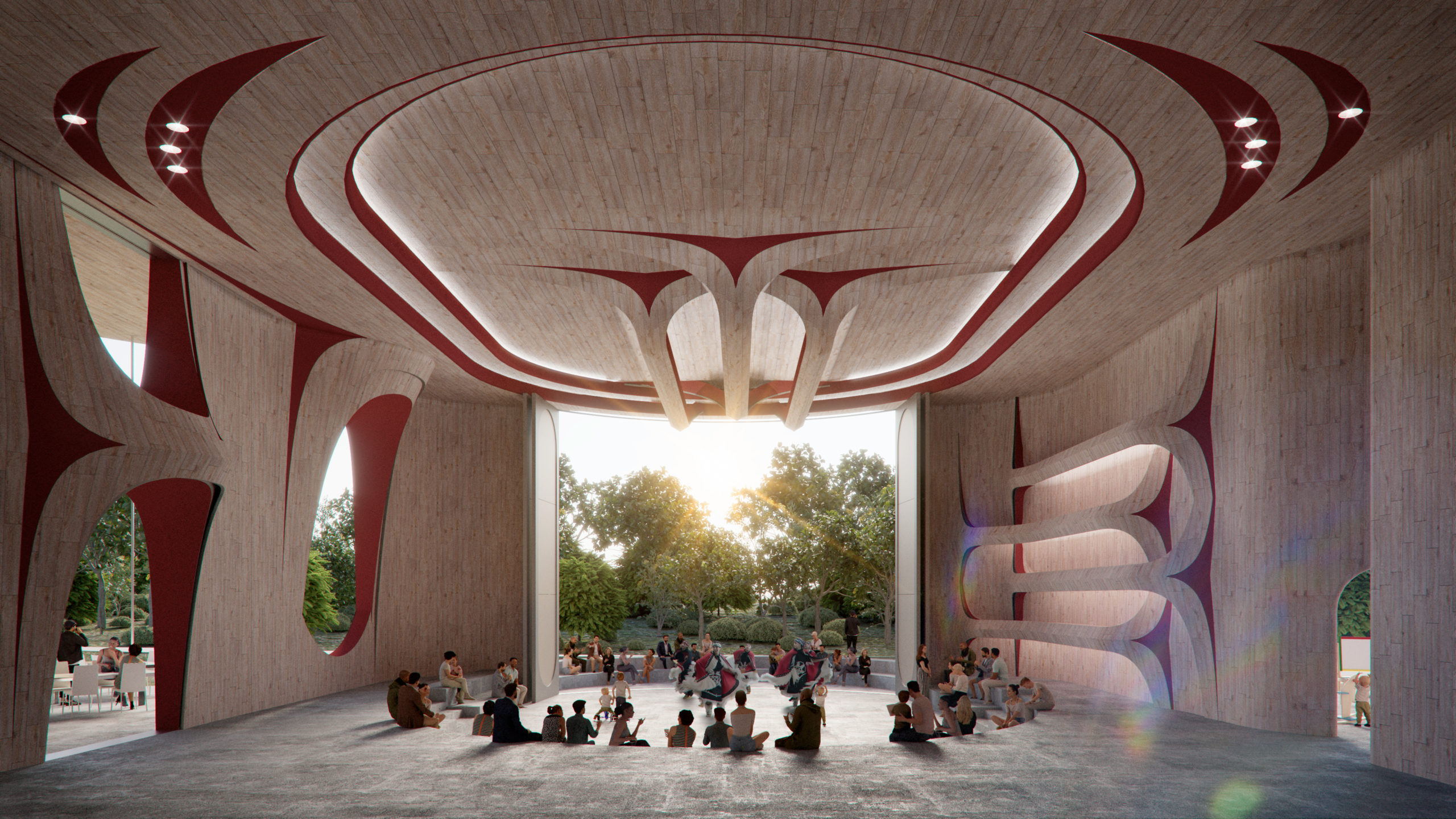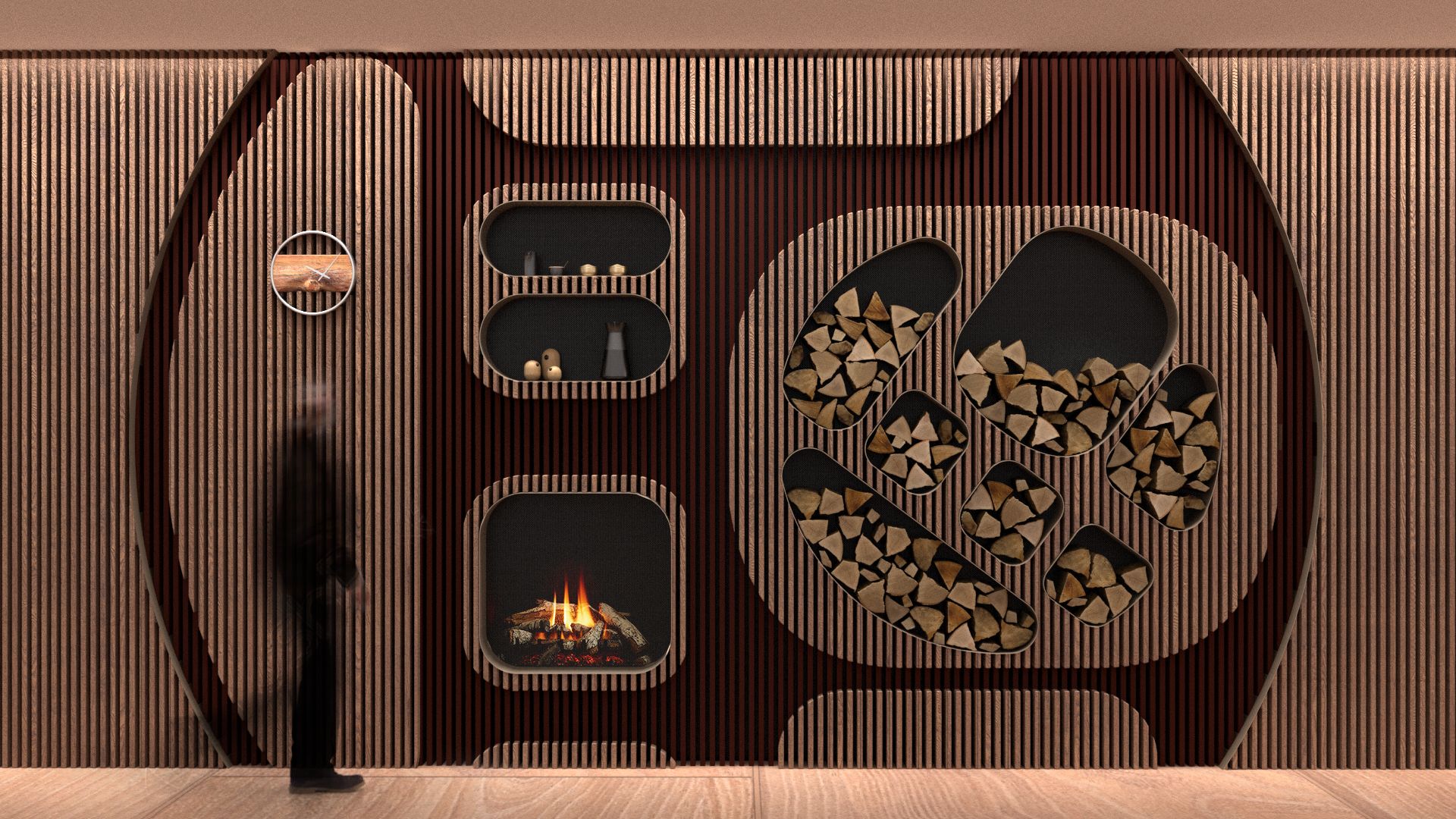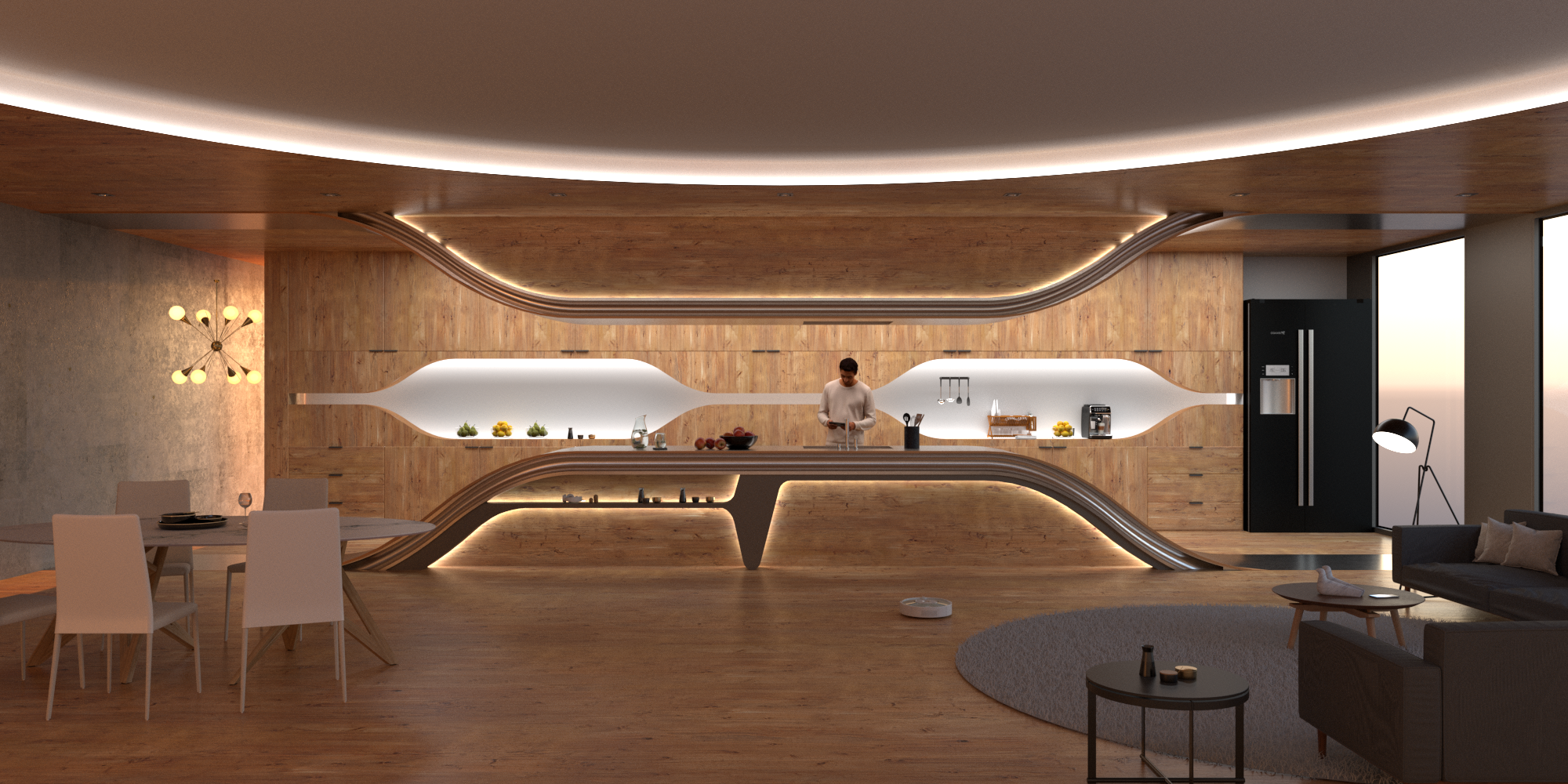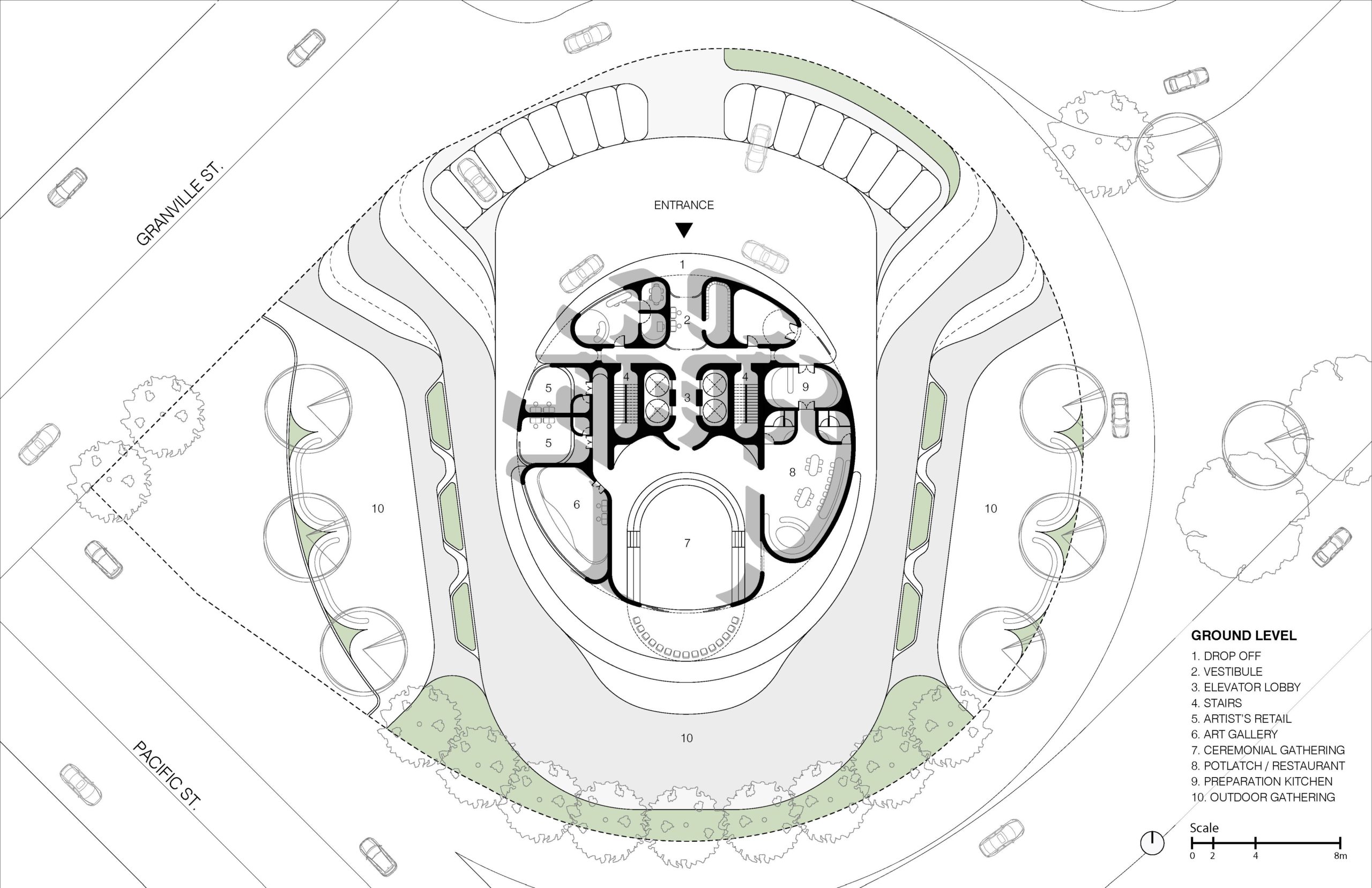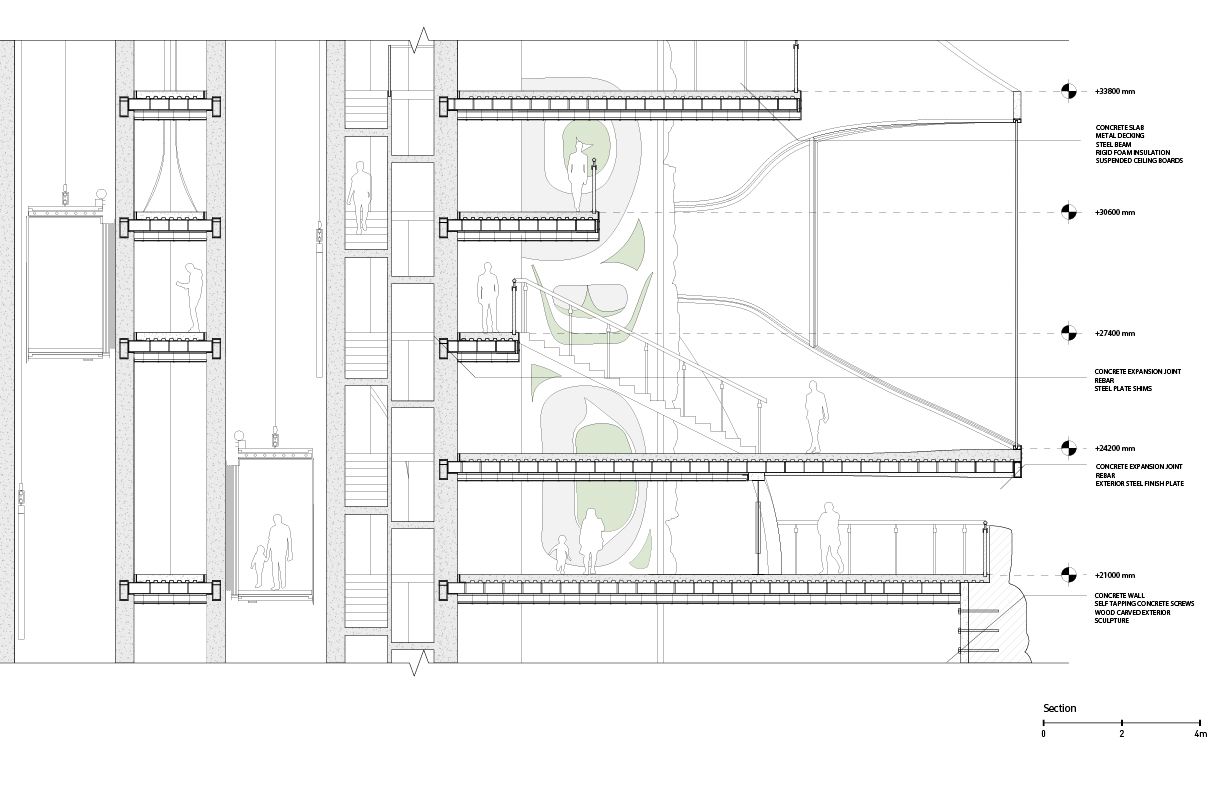Totem Tower’s Design Concept
In recent years, Vancouver has seen rapid population growth and urban development, leading to the proliferation of generic glass-tower typology in its skyline. This has resulted in a loss of cultural identity and a lackluster urban experience. To address this, there is a need to find ways for skyscrapers to express, appreciate, and restore the surrounding cultural context.
Traditionally, totems have served as important artifacts and artistic representations of spiritual and cultural significance. However, in today’s scale of society and urbanism, these traditional forms are easily overshadowed by the dominance of glass and concrete skyscrapers.
To break away from the monotonous urban landscape shaped by global capitalism, Meme Architects proposes a fresh interpretation of the totem in contemporary urbanism. They envision integrating this unique iconography into the architecture itself, specifically in the form of a high-rise tower, which is one of the most visible and iconic man-made structures. This raises the question of what cultural heritage should be championed in Vancouver.
Vancouver is historically the traditional settlement of the Musqueam, Squamish, and Tsleil-Waututh nations, collectively known as the Pacific Northwest Coast people. These indigenous communities have a rich history and have developed distinct visual languages that continue to captivate the world.
Despite this cultural wealth, the urban environment in Vancouver has struggled to establish a unique identity and is often considered a generic backdrop in the film industry, able to pass for any city.
To address this, skyscrapers can begin to express, appreciate, and restore the surrounding cultural context. One speculative project that explores this relationship between urbanism and heritage is the Totem Tower, located in the southern end of downtown Vancouver.
As Vancouver’s newest landmark, the Totem Tower stands as the tallest wooden structure in the city’s skyline, bringing a distinctive iconography to the otherwise characterless urban landscape.
The tower is designed with a focus on community engagement, with lower floors dedicated to welcoming and facilitating active participation from Vancouver residents. Sculptural geometries and artisanal details define the Totem Tower’s design, creating curved walls and ceilings that reflect its unique identity. These qualities extend to the spaces and services provided for the tower’s residents, ensuring a holistic and culturally meaningful experience.
Every aspect of the Totem Tower embraces native North American aesthetics, leaving no stone unturned. The spatial compositions of the tower, as seen in its plans and sections, are meticulously designed and arranged to replicate the traditional and vernacular artistic approaches of the region.



